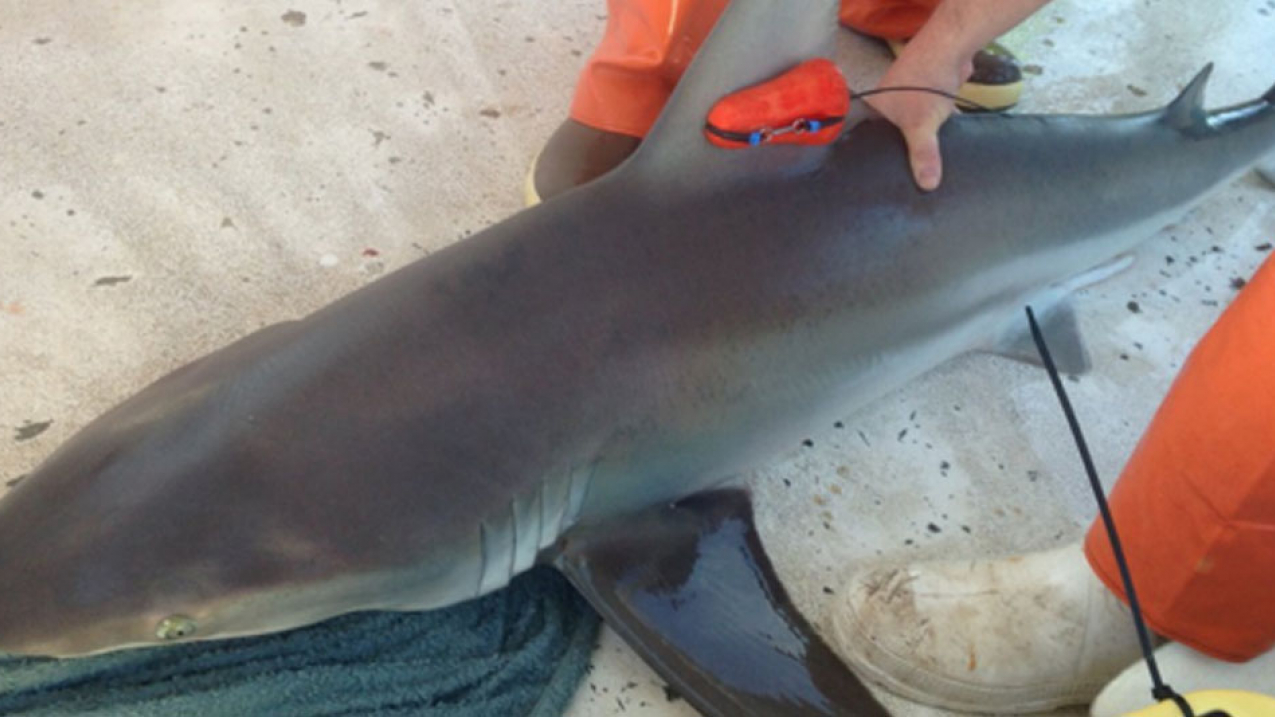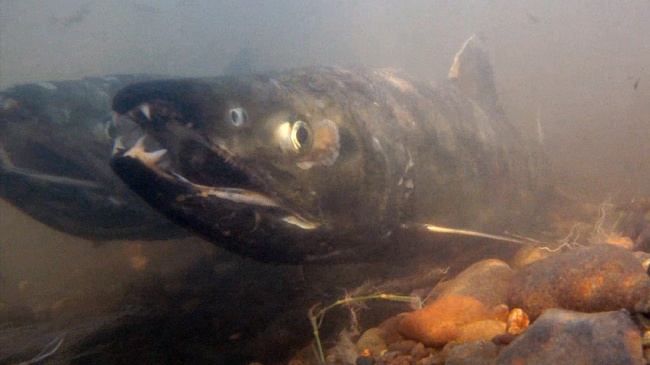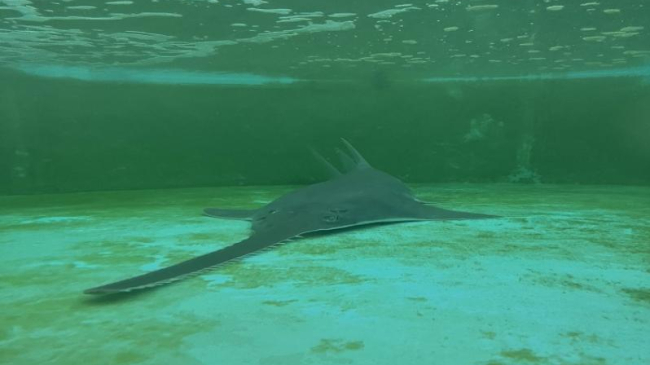NOAA is inviting public comment on its draft National Bycatch Reduction Strategy. The proposal continues the nation’s momentum on reducing bycatch--when fishermen catch fish they don’t want, can’t keep, or aren’t allowed to keep.

Researchers tag a dusky shark as part of a Bycatch Reduction Engineering Program-funded study to record its behavior. (Image credit: NOAA, University of New England)
Bycatch can also occur when fishing gear harms or kills marine mammals, seabirds, corals, sponges, sea turtles, or protected fish.
”Bycatch is a complex, global issue that can threaten the continued sustainability and resiliency of our fishing communities, economies and ocean ecosystems,” said Eileen Sobeck, assistant NOAA administrator for fisheries. “The United States is doing its part to reduce and prevent it. This strategy outlines how NOAA is working on multiple fronts with many partners to develop innovative solutions to minimize bycatch here and helping others do so abroad.”
The draft strategy provides a coordinated national approach for NOAA and its partners to identify and address how bycatch issues differ by region. It also addresses domestic and international program areas such as bycatch monitoring, research, management, program evaluation, enforcement and communication.
“This strategy recognizes both where we’ve been and where we are going and positions the United States to build on decades of bycatch reduction work under the authority of the Magnuson-Stevens Act, the Marine Mammal Protection Act, Endangered Species Act, and other relevant laws,” said Sobeck. “Our goal is to reduce bycatch and encourage use of unwanted catch, keeping our fisheries sustainable while conserving and recovering protected species.”
The strategy completes a series of bycatch-related documents out this month. A report to Congress, released last week, shows the agency’s progress in improving technologies and changing fishing practices to reduce and prevent bycatch. Earlier this week, NOAA Fisheries distributed an update to its bycatch statistics showing how bycatch varies by fishery and type of gear.
“Bycatch is an issue NOAA Fisheries cannot address alone,” said Richard Merrick, Ph.D., chief scientist for NOAA Fisheries. “Our strategy involves close collaboration with fishermen, management partners, researchers, and other stakeholders to find win-win solutions.”
NOAA Fisheries is accepting public comment on the draft strategy through June 3. When the strategy is final, NOAA will consult with its partners and stakeholders to prepare regional action plans.
NOAA’s mission is to understand and predict changes in the Earth's environment, from the depths of the ocean to the surface of the sun, and to conserve and manage our coastal and marine resources. Join us on Facebook, Twitter, Instagram and our other social media channels.
Contact
Jennie Lyons
jennie.lyons@noaa.gov
301-427-8013



